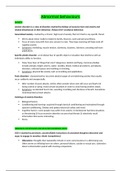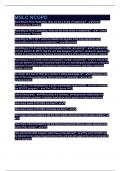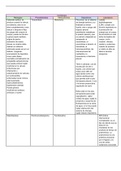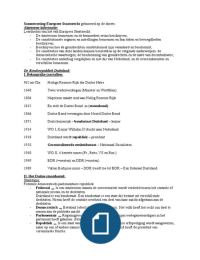The Forsaken Wife
Structure & Rhyme
- Rhymes are arranged in couplets throughout the entire poem.This could denote the
nature of lines always existing in ‘duos’,for there to be a rhyme, two couplets must
exist.This could be related to a man and wife; the wife, alone, is left incomplete
without her husband. This can also be related to the word used in the title
‘Forsaken’.
- 1 quatrain and 2 octets (3 stanzas).Could symbolise the extent of her growing anger
and then the emotion being sustained, through the length of the stanzas increasing
from four-lines to ultimately eight-lines.
- harsh consonance in the opening stanza of ‘p’s that contributes to a heavily stressed
bitter tone.
- Then the repetition of ‘one’ and ‘humanity’ stress the heartlessness of his actions
with the deeply sarcastic rhetorical question contribute to this as well.The
monosyllabic and stressed rhyme (couplets throughout the whole poem) also
contributes to this tone.
- the heavy use of first person pronouns ‘I’ and ‘my’ that are used to focus the reader
on the personal suffering and are contrasted with the selfish and cruel ‘you’ to
clearly demonstrate the injustice between men and women.
- There are some near rhymes- showing how relationships sometimes can be one
sided. She is making an active effort to ‘pair’ and be together, he is not.
- There are some perfect rhyming couplets, which suggest that sometimes he is true
to her and sometimes he is not.
- The rhyming couplets suggest her superiority and that she is in control, she is not
depressed and the final stanza has a superior tone.
- The first stanza has four lines, the 2nd stanza: eight lines and the 3rd: 8 lines. The
irregular structure suggests her different emotions. The first few lines of the poem
are pitying, and then bitter then the last stanza is triumphant. When she pity’s
herself, she feels small. This is communicated in the number of lines of the first
stanza. The husband is above her and she expects the husband to pity her too ‘me
thinks… can’t afford one pitying look… what’s humanity to you’
-
Tone
- Very, very bitter and justifiably so. However, from the sparks of anger comes a fire of
superiority and freedom from the confines of expecting to be submissive to men.
- voice of the poem is a construct
Structure & Rhyme
- Rhymes are arranged in couplets throughout the entire poem.This could denote the
nature of lines always existing in ‘duos’,for there to be a rhyme, two couplets must
exist.This could be related to a man and wife; the wife, alone, is left incomplete
without her husband. This can also be related to the word used in the title
‘Forsaken’.
- 1 quatrain and 2 octets (3 stanzas).Could symbolise the extent of her growing anger
and then the emotion being sustained, through the length of the stanzas increasing
from four-lines to ultimately eight-lines.
- harsh consonance in the opening stanza of ‘p’s that contributes to a heavily stressed
bitter tone.
- Then the repetition of ‘one’ and ‘humanity’ stress the heartlessness of his actions
with the deeply sarcastic rhetorical question contribute to this as well.The
monosyllabic and stressed rhyme (couplets throughout the whole poem) also
contributes to this tone.
- the heavy use of first person pronouns ‘I’ and ‘my’ that are used to focus the reader
on the personal suffering and are contrasted with the selfish and cruel ‘you’ to
clearly demonstrate the injustice between men and women.
- There are some near rhymes- showing how relationships sometimes can be one
sided. She is making an active effort to ‘pair’ and be together, he is not.
- There are some perfect rhyming couplets, which suggest that sometimes he is true
to her and sometimes he is not.
- The rhyming couplets suggest her superiority and that she is in control, she is not
depressed and the final stanza has a superior tone.
- The first stanza has four lines, the 2nd stanza: eight lines and the 3rd: 8 lines. The
irregular structure suggests her different emotions. The first few lines of the poem
are pitying, and then bitter then the last stanza is triumphant. When she pity’s
herself, she feels small. This is communicated in the number of lines of the first
stanza. The husband is above her and she expects the husband to pity her too ‘me
thinks… can’t afford one pitying look… what’s humanity to you’
-
Tone
- Very, very bitter and justifiably so. However, from the sparks of anger comes a fire of
superiority and freedom from the confines of expecting to be submissive to men.
- voice of the poem is a construct





